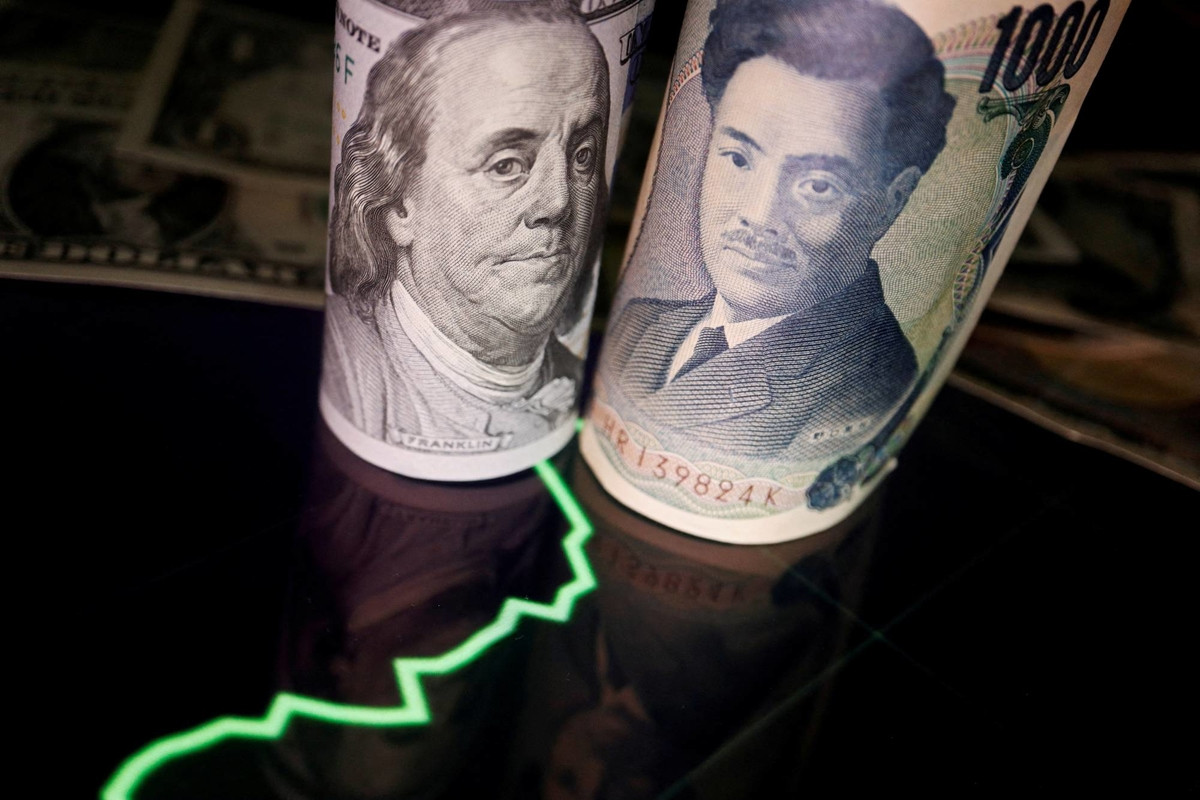
The US dollar is back on top. On Friday, USD spectacularly outperformed its major competitors, but it showed its best performance against JPY. Can USD/JPY sustain this uptrend in the short term, and what does the future hold for it?
Silver lining for greenback
At the end of last week, the US dollar declined against a basket of major currencies by 0.2%, the largest weekly drop for USD since May.
However, the losses for the US dollar could have been much more significant if it weren't for its Friday rally. On June 2nd, DXY jumped by more than 0.4%. This was the dollar's best daily performance since mid-May.
What brought the dollar back to life? Experts believe that the main driver of the USD uptrend is investors reassessing their expectations regarding the monetary policy of the Federal Reserve.
The publication of the US non-farm payroll report last Friday forced traders to reconsider their forecasts regarding the future trajectory of interest rate hikes.
The May non-farm payrolls report showed a sharp increase in the number of new jobs in the US, shocking the market. About 339,000 new jobs were created last month, which was well above the preliminary estimate of 190,000 and the revised April figure of 294,000.
On the other hand, the unemployment rate in the US also noticeably increased to 3.7% from 3.4%, while average hourly earnings, which are a gauge of wage inflation, reached 4.3% year-over-year, slightly lower than the expected 4.4%.
Despite the mixed data, which indicated some slowdown in the American labor market, the strong employment growth in May still managed to convince traders that US interest rates could be hiked even further.
Considering the recent dovish rhetoric of Fed members, the majority of market participants still expect the central bank to keep interest rates unchanged in June.
However, many traders lean towards the US central bank raising rates by at least 25 basis points in July. Market participants are pricing in a 70% probability of this scenario occurring.
Increasingly hawkish sentiment regarding further tightening in the US has provided an excellent boost to the yields of US Treasury bonds.
On Friday, the yield on 10-year US government bonds surged by 1% to 3.67%, while their 2-year counterparts jumped by almost 2% to 4.47%.
The sharp increase in bond yields sent the dollar skywards against the yen. At the end of the week, USD/JPY experienced a parabolic run, increasing by over 0.8% in a single day and reaching 139.9.

On Monday morning, the US dollar has continued to advance against the Japanese currency. At the time of writing, USD has risen by 0.1%, breaking above the key level of 140.
According to analyst Bart Wakabayashi, the decrease in wages in America suggests the Fed might potentially pause the hike cycle. However, he stated that the US central bank is unlikely to end rate hikes in June due to the relatively robust state of the labor market and persistent inflation. Wakabayashi emphasized that the expectations of higher interest rates are likely to give substantial support to the US dollar, particularly against the yen.
According to the expert, in the near term, the US dollar could rise to 142.50 against the Japanese yen. A breakout above this level will pave the way towards the key level of 145.
The technical situation also suggests USD/JPY may increase further. The asset has confidently held above the Fibo retracement level of 50% at 139.66. The Relative Strength Index (RSI) is fluctuating within the bullish range of 60.00-80.00.
What are the risks for USD/JPY?
Currently, support for the dollar-yen pair comes not only from hawkish market expectations regarding further monetary tightening in the US but also from the dovish stance of the Bank of Japan (BOJ).
According to MUFG analyst Derek Halpenny, the fact that the new head the Bank of Japan (BOJ) is in no hurry to alter the existing monetary policy stance has further strengthened the yen's decline against the US dollar.
Despite inflation accelerating significantly, the Japanese central bank continues to maintain extremely low interest rates (-0.1%) and keeps the yield on 10-year bonds within the range of +/- 50 basis points through its yield curve control (YCC) policy.
In his recent statements, BOJ Governor Kazuo Ueda stated the Japanese regulator should maintain its ultra-dovish policy, claiming inflation was transitory.
However, many experts believe that the Bank of Japan may surprise the markets in the near future and adjust the YCC, similar to what it did at the end of last year.
In December 2022, the BOJ expanded the target range of the yield of 10-year government bonds to improve the functioning of the local bond market. Traders interpreted this move as hawkish, which boosted the Japanese yen.
Analysts at Societe Generale believe that the Bank of Japan may make changes to the YCC mechanism as early as next week at the June meeting on monetary policy.
"If the BoJ adjusts its Yield Curve Control range at its June policy meeting as we expect, the USD/JPY could drop to around 130 again as the JGB yield rises. We also think USD/JPY could drop to 110 after 2025," analysts noted.
MUFG analysts also expect short-term upside potential for USD/JPY to be limited. However, in their opinion, the main pressure on the asset will come from the June rate hike pause by the Fed.
MUFG predicts that the Bank of Japan will only begin adjusting the YCC in the fourth quarter of 2023. The bank's analysts expect USD to slide down against JPY by approximately 3% to 136 by the end of 2023.





















